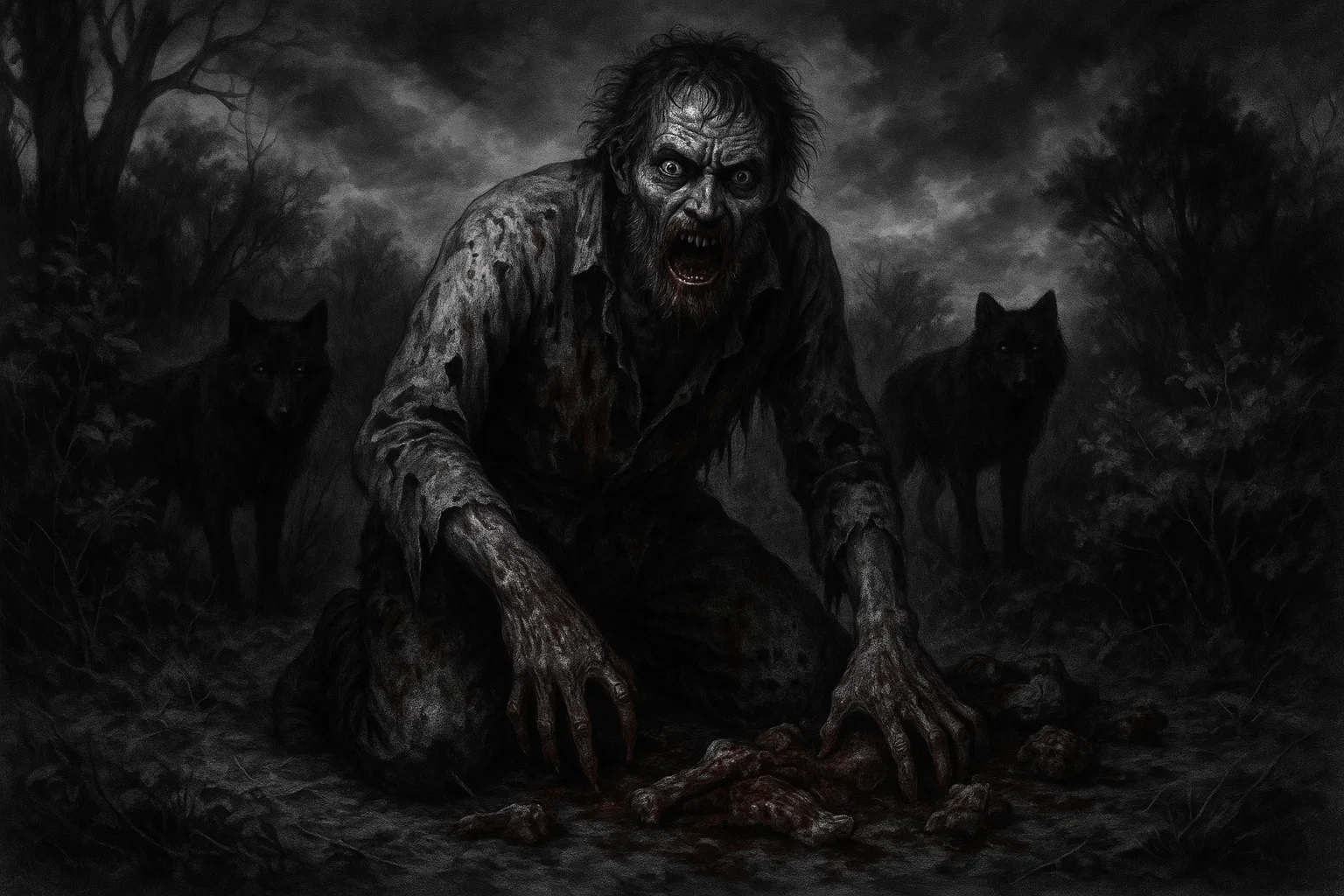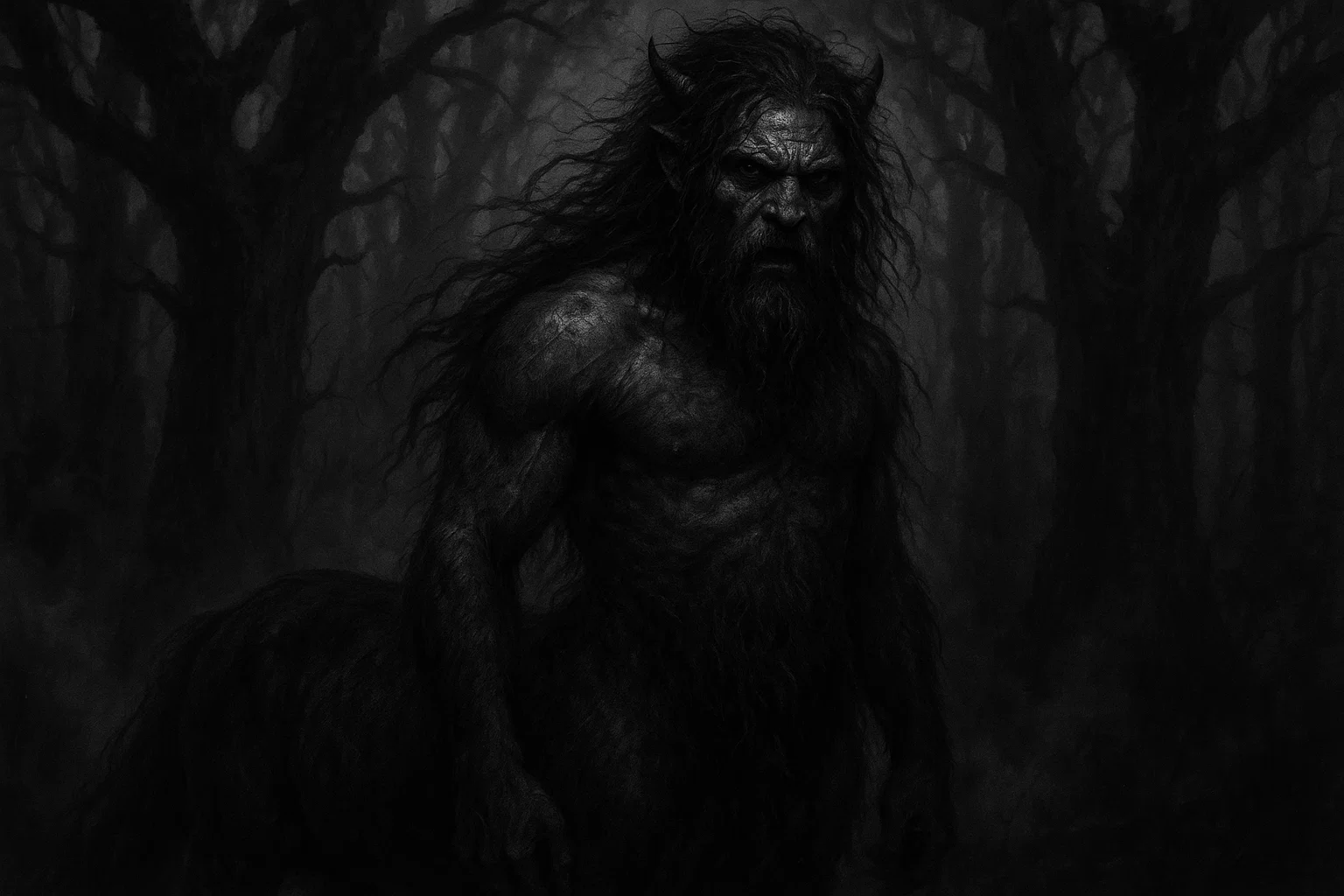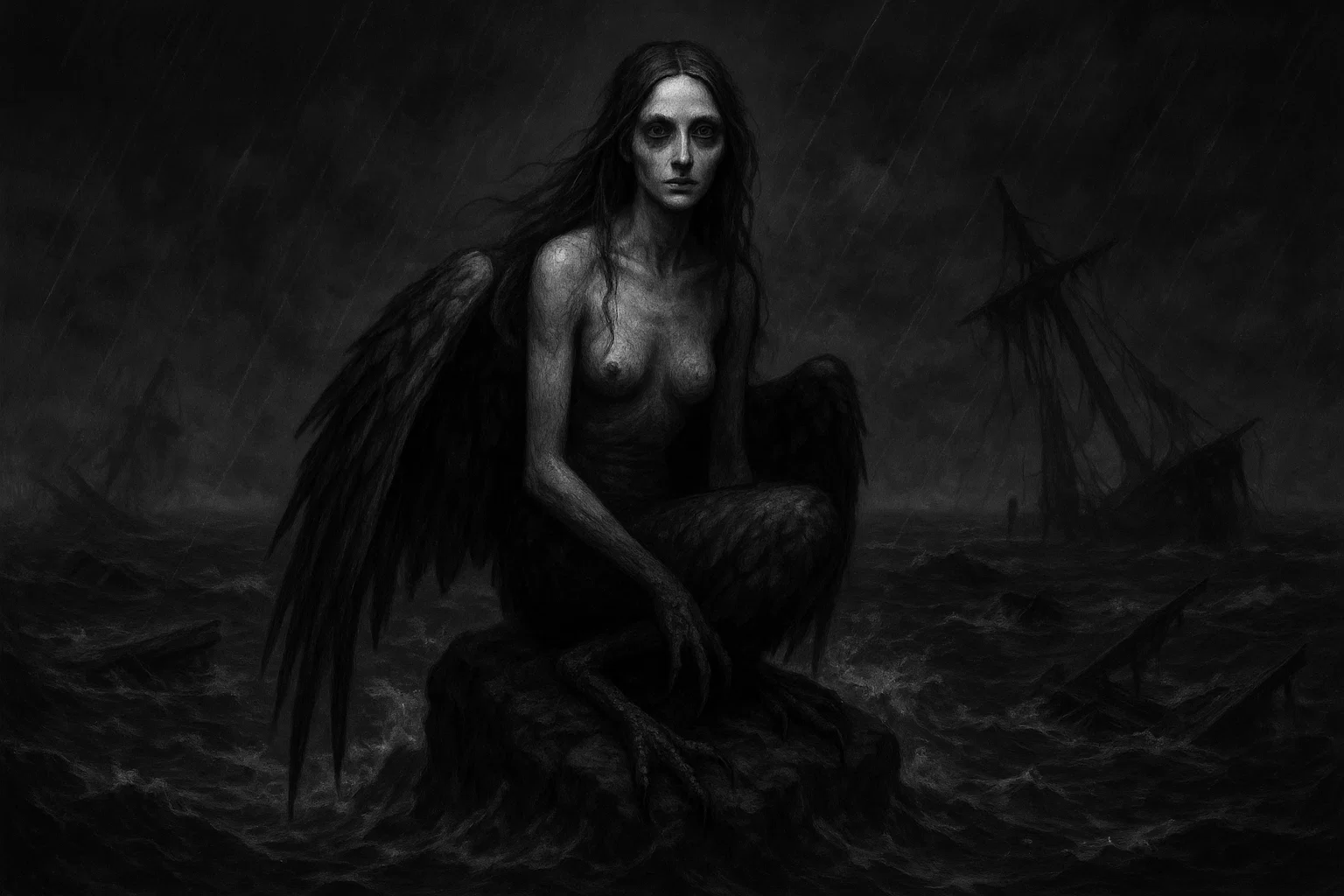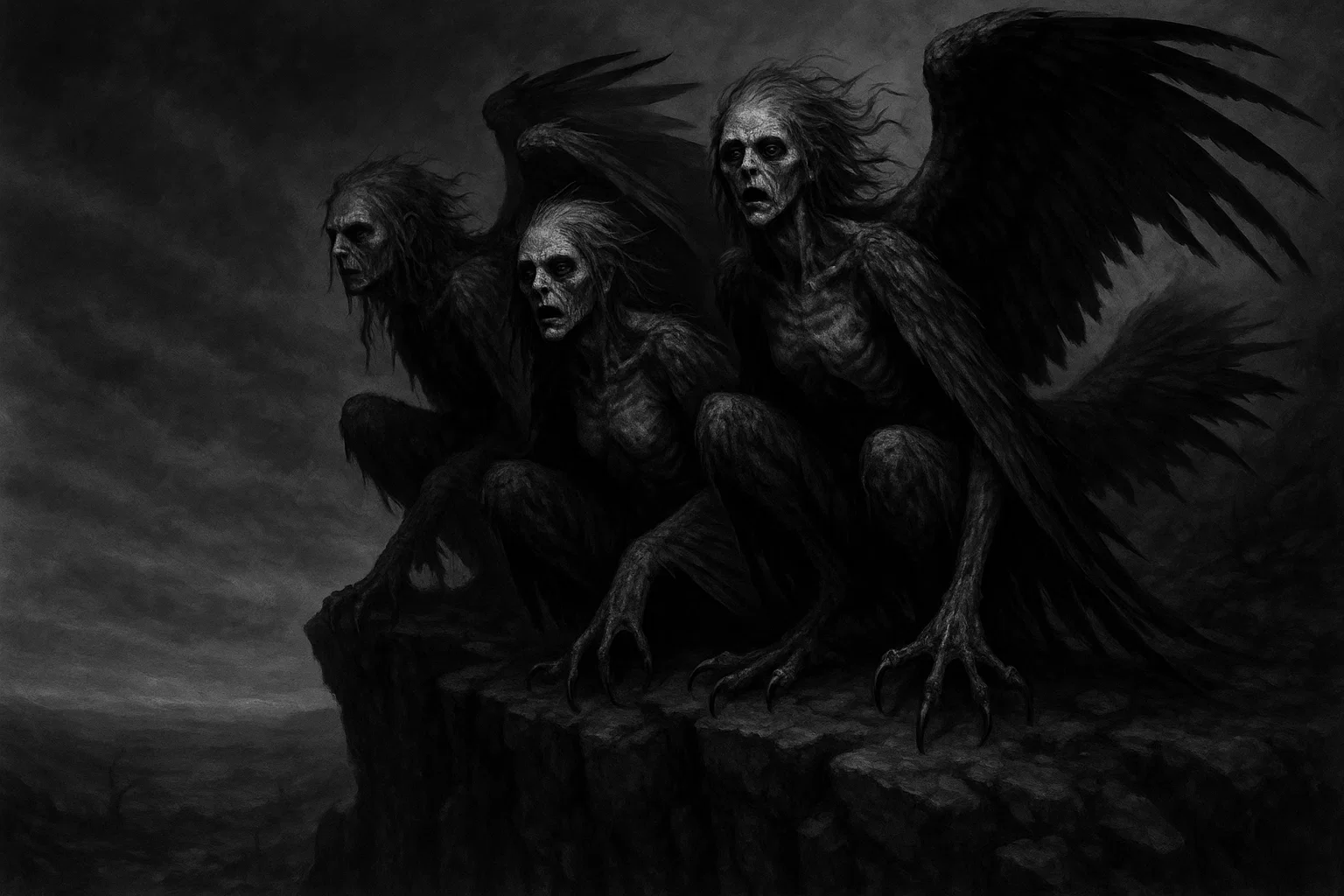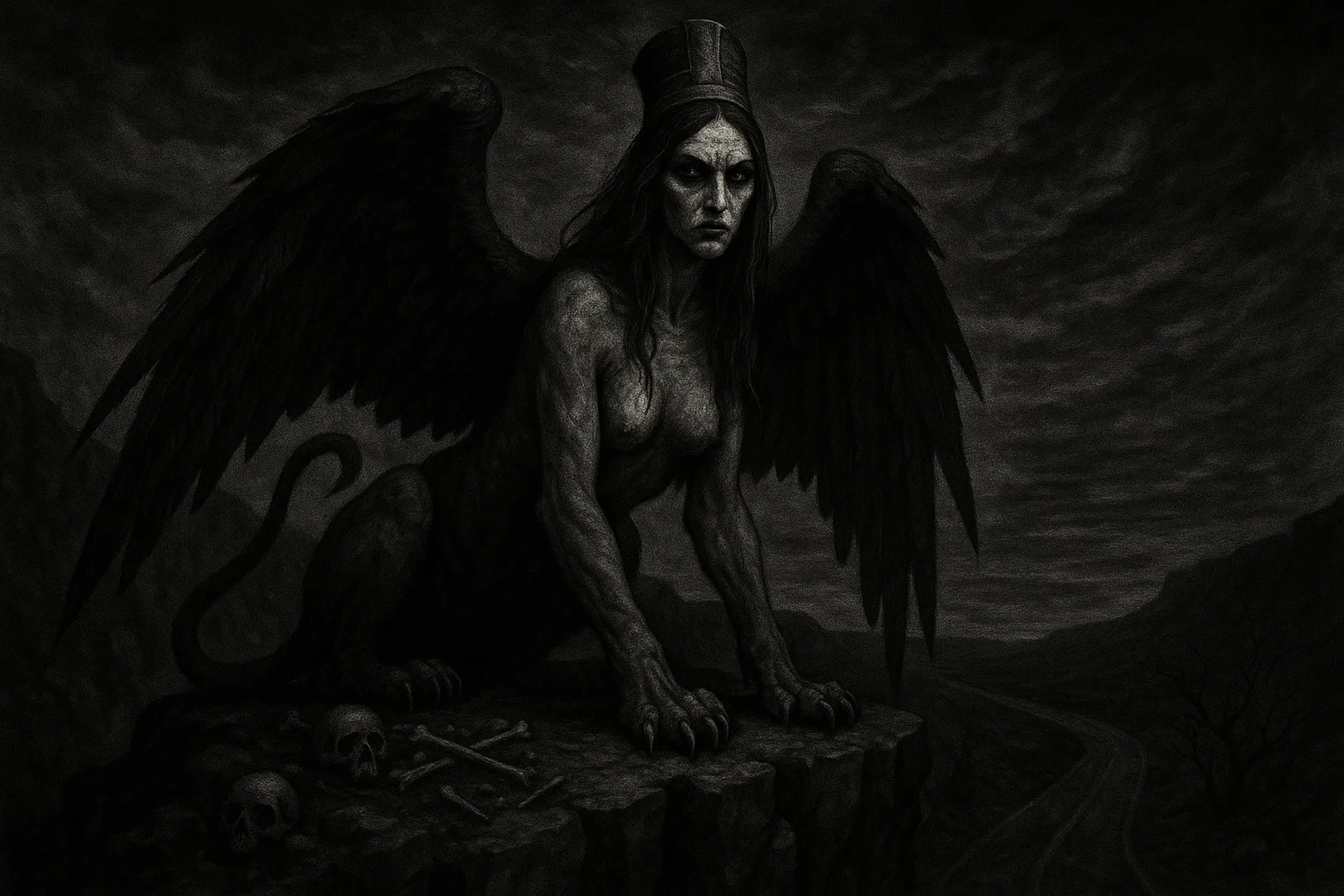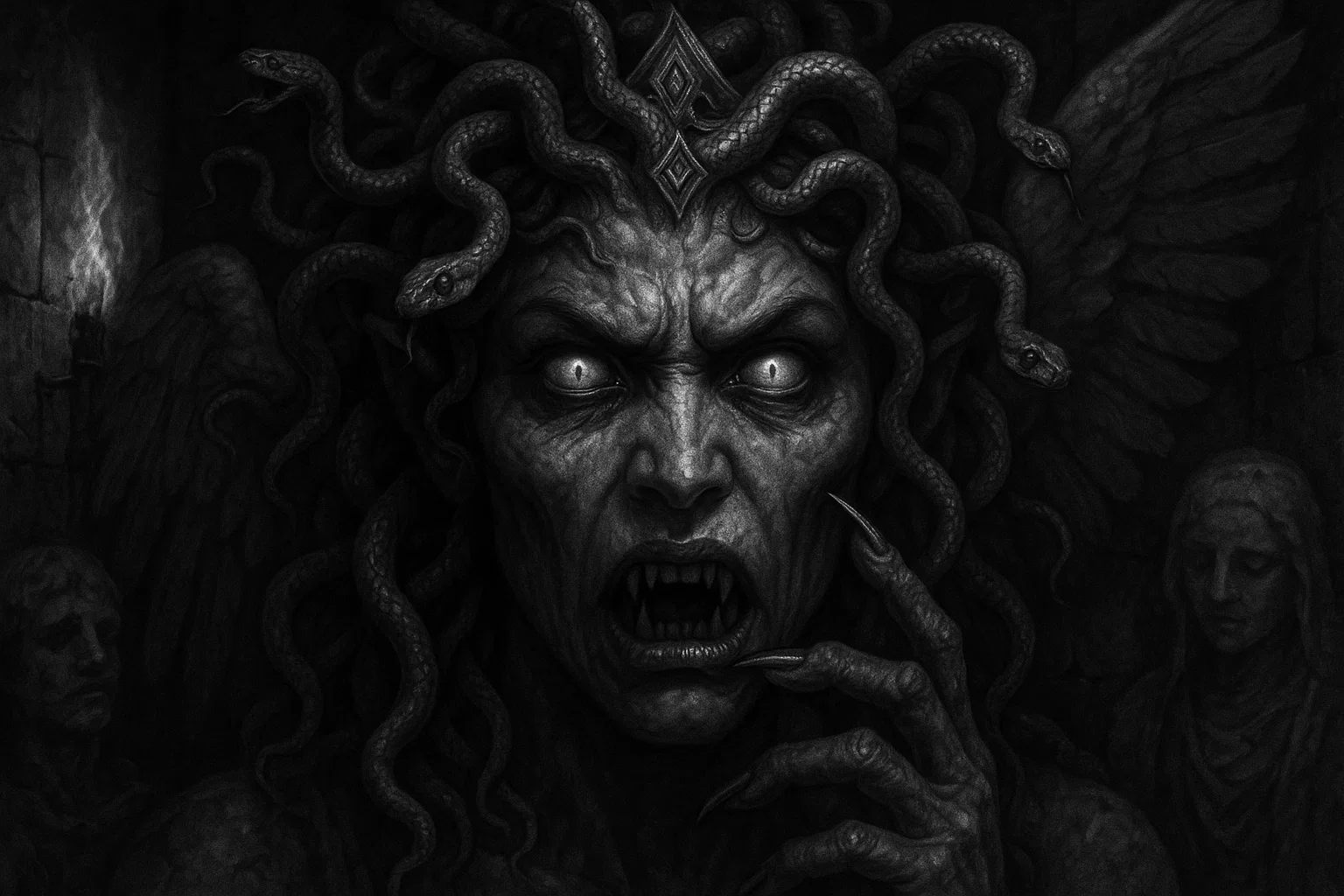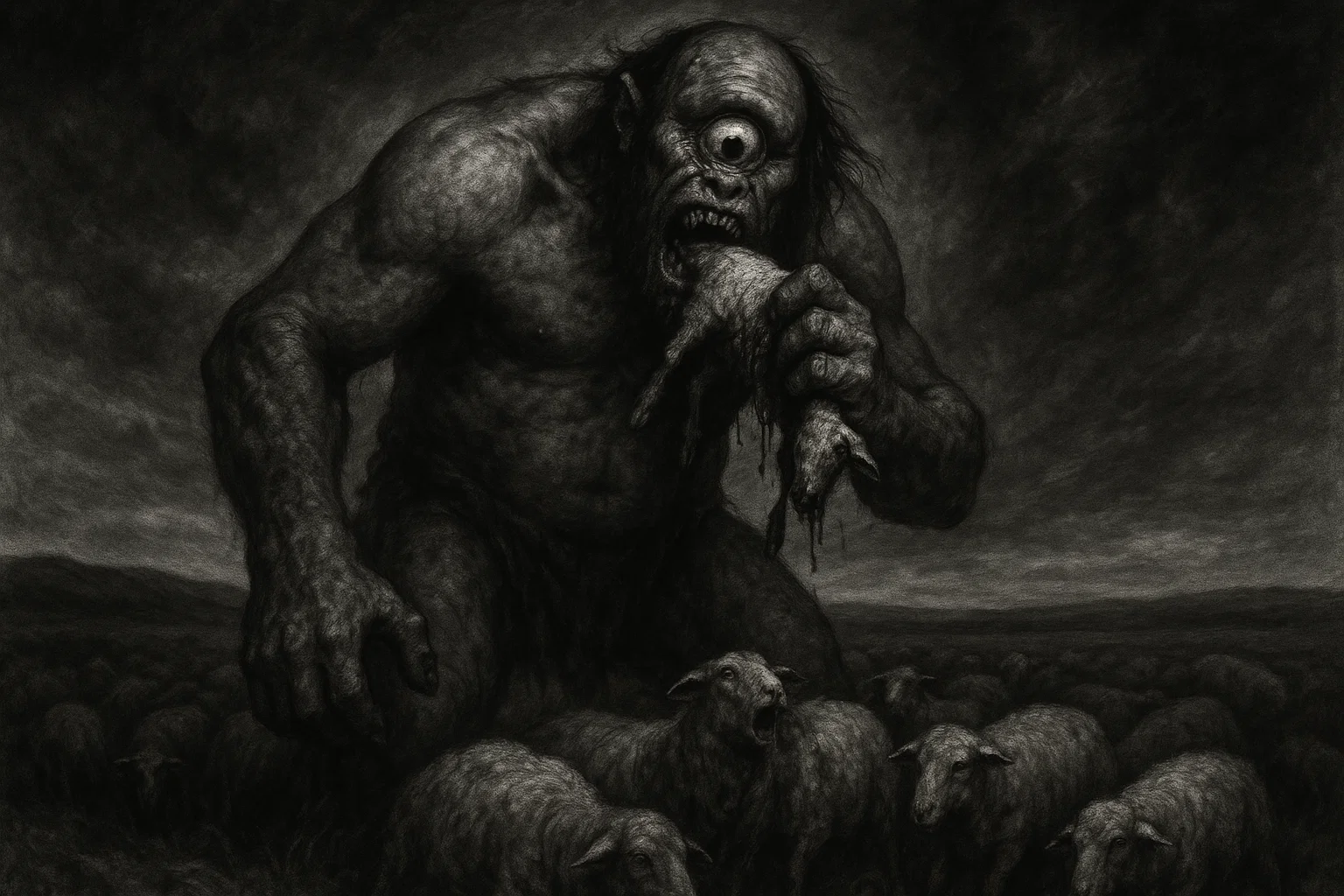Jacques Roulet, known as the Werewolf of Caude or Werewolf of Angers, stands as a haunting figure in the annals of 16th-century France. In 1598, his arrest for murder, lycanthropy, and cannibalism sent shockwaves through the region, as he confessed to transforming into a wolf to commit heinous crimes.
This article explores Roulet’s life, the gruesome accusations against him, his trial’s surprising outcome, and the historical context, offering a vivid glimpse into a world gripped by superstition and fear.
Summary
Overview
The table below provides a concise snapshot of Jacques Roulet’s case:
| Aspect | Details |
|---|---|
| Name | Jacques Roulet |
| Year | 1598 |
| Location | Caude, near Angers, France |
| Accusation | Murder, lycanthropy, cannibalism |
| Key Event | Found near a mutilated 15-year-old boy’s body with blood and human flesh on him |
| Confession | Claimed a magical salve enabled wolf transformation |
| Family Involvement | Implicated brother Jean and cousin Julien as werewolves |
| Initial Sentence | Death by burning |
| Final Outcome | Two years in Hospital Saint-Germain des Prés after appeal |
Who Was Jacques Roulet?
Jacques Roulet was an impoverished beggar from Caude, a small village near Angers in western France.
Born into destitution, he lived a transient life alongside his brother Jean and cousin Julien, scraping by on alms and occasional labor. Roulet’s existence on society’s fringes made him a target for suspicion in a time when vagrants were often viewed as threats.
No records detail his birth or early years, but his family’s poverty likely forced them into a nomadic lifestyle, moving between villages in the Loire Valley.
Described as gaunt and disheveled, Roulet was illiterate, a common trait among the lower classes of the period, and his lack of social ties left him vulnerable to accusations of deviance.
His 1598 trial thrust him into infamy, as he confessed to being a werewolf capable of transforming into a beast to hunt human prey. This claim, whether born of delusion or coercion, aligned with the era’s deep-seated belief in lycanthropy as a supernatural affliction.
Roulet’s case is notable not only for its sensational nature but also for its outcome, which hinted at an emerging understanding of mental illness in a judicial system steeped in superstition.
You May Also Like: What Was the Soviet Dog Head Experiment?
Jacques Roulet’s Story
In the late summer of 1598, the tranquil forests near Caude became the scene of a horrifying discovery.
On August 12, two local hunters, Pierre Dubois and Étienne Martin, stumbled upon the mutilated body of a 15-year-old boy named Marcel Gauthier.
The corpse was gruesome—limbs torn, torso ripped open, and entrails scattered across the forest floor. As the hunters approached, they spotted two wolves gnawing at the remains, their muzzles stained with blood.
The animals fled into the dense thicket, but the hunters’ pursuit led them to a chilling sight: Jacques Roulet, half-naked, his tattered clothing soaked in blood, and fragments of human flesh lodged beneath his fingernails.
The hunters apprehended Roulet, restraining him with ropes before alerting the local magistrate, Guillaume de la Roche. The authorities, led by de la Roche and supported by a small militia, acted swiftly, fearing a werewolf prowled their lands.
Roulet’s disheveled appearance and the damning evidence—blood on his hands and flesh under his nails—ignited panic in Caude.
Villagers whispered of other disappearances: a young girl, Élise Fournier, aged 12, had vanished from a nearby farmstead in June, and a shepherd boy, Thomas Leblanc, aged 14, was reported missing in July. Both cases, previously unexplained, were now linked to Roulet.
Under interrogation, likely intensified by torture—a standard practice involving thumbscrews or the rack—Roulet confessed to a litany of horrors.
He claimed his parents, long deceased, had given him a magical salve that enabled him to transform into a wolf. In this form, he said, he roamed the countryside with his brother Jean and cousin Julien, targeting vulnerable victims.
Roulet described stalking Marcel Gauthier through the forest, waiting until the boy was alone before attacking with feral strength. He admitted to tearing the boy’s throat and devouring parts of his flesh, reveling in the act.
He further confessed to killing Élise Fournier, claiming he ambushed her while she gathered firewood, and Thomas Leblanc, whom he attacked near a stream. Roulet’s accounts were vivid, recounting how he and his kin would howl under the moonlight, their bodies contorted into lupine forms by the salve’s power.
The authorities searched for evidence to corroborate Roulet’s claims. They found no trace of the alleged salve, nor did they locate Jean or Julien, who had reportedly fled Caude after Roulet’s arrest.
Villagers reported seeing wolves near the sites of the disappearances, but no physical evidence linked these animals to the crimes. A farmer, Jacques Moreau, testified to hearing eerie howls on the nights Élise and Thomas vanished, and a widow, Marie Lefèvre, claimed to have seen a “man-beast” lurking near her cottage.
These accounts fueled speculation but lacked concrete proof. The magistrate’s investigation uncovered no additional bodies, leaving Marcel Gauthier’s murder as the primary evidence against Roulet.
The accusations against Roulet tapped into a deep well of fear in 16th-century France. Lycanthropy was not merely folklore but a perceived reality, often tied to witchcraft and demonic pacts.
The Loire Valley, with its dense forests and isolated hamlets, was fertile ground for such beliefs. Roulet’s status as a beggar made him an easy scapegoat, as the poor were frequently blamed for societal ills.
The community’s reaction was one of terror and outrage, with calls for swift justice to protect against further attacks. The hunt for Roulet’s supposed accomplices yielded no results, but the fear of a werewolf pack persisted, driving villagers to arm themselves and patrol the woods at night.
Roulet’s confessions, while detailed, raised questions. He provided no verifiable details about his victims beyond Marcel, Élise, and Thomas, and his claims of transformation lacked physical evidence.
Some villagers, including a local priest, Father Antoine Dubois, suggested Roulet’s tales were delusions born of starvation or madness, but such views were overshadowed by the era’s superstition. The authorities, under pressure to restore order, prepared Roulet for trial, convinced of his guilt as a werewolf and murderer.
You May Also Like: Gozu Urban Legend: The Story That Allegedly Kills You
Jacques Roulet’s Werewolf Trial
On August 20, 1598, Jacques Roulet was formally charged with murder, lycanthropy, and cannibalism in the court of Angers.
His capture had been swift: after the hunters handed him over to Guillaume de la Roche, he was bound in chains and held in a damp, stone-walled cell beneath the local courthouse.
The conditions were harsh—Roulet was given meager rations of bread and water, and guards reported his incessant muttering about wolves and salves. Interrogation began within days, overseen by de la Roche and a panel of local officials, including notary Claude Beaumont and prosecutor Henri Valois.
Torture was likely employed, as was customary in serious cases. Records suggest Roulet endured the strappado, a method where the accused’s hands were tied behind their back and hoisted, causing excruciating pain.
Under this duress, Roulet reiterated his confession, detailing his transformation into a wolf and the murders of Marcel Gauthier, Élise Fournier, and Thomas Leblanc.
He claimed the salve, a greasy ointment with a foul odor, was applied to his skin, triggering a metamorphosis that left him with claws and fangs. He described the thrill of the hunt, the taste of blood, and the complicity of his brother and cousin, though he offered no proof of their involvement.
The trial, held in early September 1598, was a public spectacle. The courtroom was packed with villagers, clergy, and minor nobles, all eager to witness justice against the Werewolf of Caude.
The prosecution presented physical evidence: Marcel Gauthier’s mutilated body, Roulet’s bloodstained clothes, and the flesh found under his nails, confirmed by a local physician, Dr. Pierre Lemoine, to be human.
Witnesses, including Pierre Dubois and Étienne Martin, recounted finding Roulet near the corpse, while Marie Lefèvre and Jacques Moreau shared their tales of strange sightings and sounds.
The defense, likely a court-appointed advocate, argued that Roulet’s poverty and possible mental instability cast doubt on his confession’s reliability, but such arguments held little sway in a court steeped in superstition.
On September 15, 1598, the Lieutenant Criminel of Angers, Jean de la Tour, pronounced Roulet guilty. The sentence was death by burning at the stake, a punishment reserved for heretics and those deemed in league with the devil.
Roulet, described as trembling and incoherent, reportedly begged for mercy, claiming his actions were driven by an uncontrollable curse.
The sentence was set to be carried out within days, but Roulet’s advocate appealed to the Parliament of Paris, France’s highest judicial body, citing irregularities in the interrogation process and the lack of evidence for lycanthropy.
The appeal process was rigorous. Transported to Paris in chains, Roulet was held in a prison cell under the watch of the Parlement’s guards. The judges, led by President Pierre Séguier, reviewed the case in October 1598.
They scrutinized the physical evidence and questioned the use of torture, noting that Roulet’s confessions were inconsistent—sometimes claiming multiple victims, other times retracting details.
A physician, Dr. Gaspard Bauhin, examined Roulet and suggested he suffered from melancholia or a form of madness, possibly clinical lycanthropy, where individuals believe they transform into animals. This perspective was novel for the time, as most courts viewed such claims as evidence of demonic influence.
On November 3, 1598, the Parliament of Paris overturned the death sentence. Instead, Roulet was sentenced to two years in the Hospital Saint-Germain des Prés, a Parisian institution known for treating the mentally ill.
The court ordered he receive medical care and religious instruction to address his “delusions” and restore his faith, which they believed his extreme poverty had eroded. This outcome was extraordinary, as most werewolf trials ended in execution.
Roulet’s confinement was likely in a sparse, supervised ward, where he was monitored by physicians and clergy. No records confirm his fate after 1600, leaving open the possibility that he died in the hospital or was released into obscurity.
The trial’s resolution marked a turning point. While the initial verdict reflected the era’s fear of werewolves, the appeal’s outcome suggested a growing skepticism among elite jurists, foreshadowing the decline of such trials in the 17th century.
You May Also Like: What Is a Vourdalak? The Horrifying Vampire That Hunts Its Own Family
Jacques Roulet vs Other Werewolves
Jacques Roulet’s case is one of many werewolf trials in early modern Europe:
| Name | Year | Location | Outcome | Similarities to Roulet |
|---|---|---|---|---|
| Gilles Garnier | 1573 | Dole, France | Burned at the stake | Confessed to child murders, claimed lycanthropy |
| Peter Stumpp | 1589 | Bedburg, Germany | Tortured, beheaded, burned | Confessed to multiple killings, used a magical belt |
| Jean Grenier | 1603 | Bordeaux, France | Life in a monastery | Confessed to attacks, young age |
| Beast of Gévaudan | 1764-1767 | Gévaudan, France | No individual convicted | Linked to wolf-like attacks |
| Thierry Gale | 1570s | France | Executed | Accused of lycanthropy |
| Sauveur Vigneau | 1580s | France | Burned at the stake | Claimed werewolf transformation |
| Francisco Blanco | 1590s | Allariz, Spain | Executed | Accused of lycanthropy |
| Werewolf of Ansbach | 1685 | Ansbach, Germany | Deemed insane, confined | Mental illness considered |
| Michel Verdun | 1521 | Poligny, France | Burned at the stake | Confessed to wolf attacks |
| Clauda Jamprost | 1590s | Franche-Comté, France | Executed | Accused of child murders |
Most cases involved confessions of lycanthropy, often coerced through torture, and accusations of murder or cannibalism. The use of magical devices—salves, belts, or potions—was a recurring motif, reflecting widespread folklore about transformation.
Roulet’s case is distinguished by its progressive outcome. Unlike Gilles Garnier or Peter Stumpp, who faced gruesome executions, Roulet’s sentence was commuted to institutionalization, suggesting an early recognition of mental illness.
Jean Grenier’s case also avoided execution due to his youth, but lacked the cannibalism element. The Beast of Gévaudan stands apart as no individual was convicted, highlighting a shift toward skepticism in later centuries.
Roulet’s reliance on a salve for transformation aligns with other cases, but his lack of a documented demonic pact sets him apart from figures like Stumpp, whose trial emphasized satanic influence.
You May Also Like: Types of Werewolves Ranked by Power and Origin
Was Jacques Roulet Real?
The historicity of Jacques Roulet’s case rests on a mix of contemporary judicial records and later historical accounts.
The primary evidence likely comes from the archives of the Parliament of Paris, which reviewed Roulet’s appeal in 1598. These records, though not widely accessible today, were referenced by 19th-century scholars like Sabine Baring-Gould in The Book of Were-Wolves (1865).
Baring-Gould’s account, drawing on older French chronicles, details Roulet’s arrest, confession, and trial, though it may include interpretive flourishes typical of Victorian-era antiquarianism.
Other sources, such as Pierre de Lancre’s Tableau de l’Inconstance des Mauvais Anges et Démons (1612), a treatise on witchcraft, mention similar werewolf cases in the Loire Valley, lending context to Roulet’s story.
Additional references appear in 17th-century French legal texts, such as the Journal des Audiences of the Parliament of Paris, which document cases of suspected lycanthropy.
These records confirm the court’s decision to confine Roulet to the Hospital Saint-Germain des Prés, a rare outcome for the time. Local chronicles from Angers, preserved in ecclesiastical archives, note the community’s panic over Marcel Gauthier’s murder and the subsequent trial, though they lack specifics about Roulet’s early life or family.
The accuracy of Roulet’s story is debated. The physical evidence—blood and human flesh—confirms his involvement in at least Marcel Gauthier’s death, but his claims of transformation and additional murders lack corroboration.
No bodies of Élise Fournier or Thomas Leblanc were found, and the absence of Jean and Julien Roulet during the investigation casts doubt on their involvement.
The use of torture, a standard practice, likely shaped Roulet’s confession, as pain often led to fantastical admissions.
Modern scholars, such as those studying early modern witchcraft, suggest Roulet may have suffered from clinical lycanthropy, a psychiatric condition where individuals believe they become animals, possibly exacerbated by starvation or trauma.
The cultural context supports the plausibility of the trial. In 16th-century France, werewolf beliefs were rampant, fueled by religious texts like the Malleus Maleficarum (1486), which linked lycanthropy to demonic influence.
The Loire Valley’s rural setting, with its dense forests and oral traditions, amplified fears of loup-garou (French for werewolf). The Parliament’s decision to prioritize treatment over execution reflects an emerging skepticism among educated elites, influenced by Renaissance humanism and early medical theories about madness.
Discrepancies exist in the accounts. Baring-Gould’s narrative, while detailed, may exaggerate Roulet’s confessions to appeal to 19th-century readers fascinated by the macabre. Earlier sources, like de Lancre’s, focus more on witchcraft than lycanthropy, potentially conflating Roulet’s case with broader trends.
The lack of surviving victim remains beyond Marcel Gauthier’s suggests Roulet’s additional confessions may have been fabricated or delusional. Nevertheless, the consistency of core details—arrest, trial, and confinement—across sources confirms the case’s historical basis.
Conclusion
Jacques Roulet’s case is a chilling testament to the fears and judicial practices of 16th-century France. His arrest for the brutal murder of Marcel Gauthier, coupled with his confession to lycanthropy and cannibalism, captivated a society steeped in superstition.
The gruesome details of his alleged crimes—stalking children, tearing flesh, and roaming as a wolf—reflect the era’s belief in supernatural threats, particularly targeting outcasts like Roulet.
The trial’s outcome, commuting a death sentence to two years in a mental institution, was a remarkable departure from the norm, hinting at an evolving understanding of mental illness.
This shift, driven by the Parliament of Paris, marks Roulet’s case as a pivotal moment in the decline of werewolf trials. His story endures as a lens into a world where folklore and justice collided, leaving a legacy that continues to intrigue historians and folklore scholars alike.

